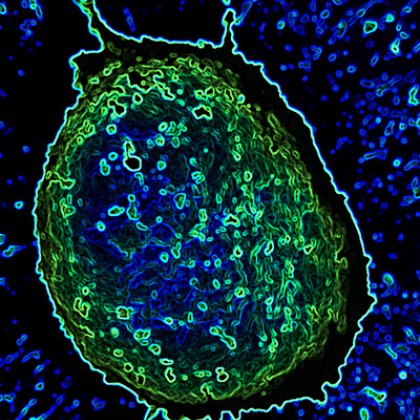
The quest to better understand human biology at a minuscule level has led to the creation of a $26 million international research centre in Melbourne.
A node of the centre will be based at The University of Queensland, led by researchers from the Australian Institute for Bioengineering and Nanotechnology (AIBN), the Centre for Advanced Imaging (CAI) and the Institute for Molecular Bioscience (IMB).
Queensland node Director Professor Mark Kendall, from AIBN and UQ's Faculty of Medicine and Biomedical Sciences, said The Australian Research Council Centre of Excellence in Convergent Bio-Nano Science and Technology brought together 19 chief investigators from around the world, with expertise in nanomaterial design and synthesis, cell biology, and engineering.
“Nanomedicine is revolutionising the way we detect and treat diseases,” he said.
“It is a rapidly emerging field of science and technology.”
The centre will bring science disciplines together to build a better understanding of living systems, including the human body.
“To understand, diagnose and treat living systems requires technologies that interact with the biological environment with nanoscale precision,” Professor Kendall said.
“That is why bio-nano science is generating such excitement, especially in developing new technologies with the potential to revolutionise medicine.”
Professor Andrew Whittaker of the AIBN and CAI said the centre’s scientific program would focus on four main application areas: delivery systems, imaging technologies, sensors and diagnostics, and vaccines.
“The work in these areas will expand the fundamental Australian science base in bio-nano interactions and facilitate translation of these scientific discoveries into novel and innovative technologies,” he said.
IMB’s Professor Rob Parton said the Queensland team would play a key role in designing medicines to seek out biochemical signatures on the surface of target cells such as tumours, without attacking nearby healthy cells.
“A major challenge of current drugs is that many of them target the good cells as well as the cancerous cells,” Professor Parton said.
“Working at the nanoscale level allows us to use materials with dimensions thousands of times smaller than the width of a human hair, which makes it easier to more accurately target treatments with minimal harm to surrounding cells.”
Other UQ researchers involved include AIBN and CAI’s Dr Kris Thurecht and AIBN's Dr Simon Corrie.
The centre, backed by a seven-year Australian Research Council grant, is led by Monash University's Professor Tom Davis.
Partner organisations include the University of Melbourne, the University of New South Wales, The University of Queensland, the University of South Australia, the Australian Nuclear Science and Technology Organisation, Imperial College London, Memorial Sloan-Kettering Cancer Center, Sungkyunkwan University, the University of Nottingham, the University College Dublin, the University of California Santa Barbara, the University of Warwick and the University of Wisconsin-Madison.
Read the ARC media release here
Media: AIBN - Ruth Neale, 07 3346 3965, 0487 955 790, r.neale1@uq.edu.au; IMB - Gemma Ward, 07 3346 2134, 0439 651 107, communications@imb.uq.edu.au.
.jpg)









